Hey guys,
DunkTrain here.
 Zeratul
Zeratul is one of my favorite heroes to play, because of his incredible mobility, high burst damage, and tricky plays you can make. I hope that with the help of this guide you can fall in love with playing Zeratul just like I have. #CHOO #CHOO
Here we will cover a brief overview of
 Zeratul
Zeratul’s skills. If you’re already familiar with Zeratul you can skip this portion, but if you’re not sure how everything works check this out to understand Zeratul’s base abilities before diving into the complexities of talents, tactics, and strategy.
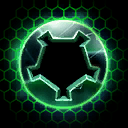
|
 Permanent Cloak is Zeratul’s most identifying characteristic in Heroes of the Storm. Learning to utilize cloaking to great effectiveness will be one of the most important things separating a good Zeratul player from a bad one. Keep in mind that the cloaking will not make you impossible to see, but it will turn you into just a shimmer effect on the enemy screen. Take advantage of the fact that you don’t show up on the minimap to ride through watchtower regions unseen, and then surprise enemies by coming at them from angles they weren’t expecting. Cloak’s telltale shimmer is the most difficult to see when the enemy is already distracted, so try to not show yourself until the enemy has committed to some other activity. Permanent Cloak is Zeratul’s most identifying characteristic in Heroes of the Storm. Learning to utilize cloaking to great effectiveness will be one of the most important things separating a good Zeratul player from a bad one. Keep in mind that the cloaking will not make you impossible to see, but it will turn you into just a shimmer effect on the enemy screen. Take advantage of the fact that you don’t show up on the minimap to ride through watchtower regions unseen, and then surprise enemies by coming at them from angles they weren’t expecting. Cloak’s telltale shimmer is the most difficult to see when the enemy is already distracted, so try to not show yourself until the enemy has committed to some other activity. |
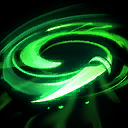
|
 Cleave is Zeratul’s most basic damaging ability. It has a low mana cost, solid damage, and a relatively short cooldown. Use this frequently for cutting down enemies, minions, mercenaries, or even doodads. Keep in mind the range on this is deceptively small, and it is not difficult to accidentally whiff a cleave on your target when you overestimate your blink distance or wait too long after hitting an enemy to activate it. A good rule of thumb is that if you can’t weapon attack the enemy from where you are standing your cleave probably won’t hit them. Cleave is Zeratul’s most basic damaging ability. It has a low mana cost, solid damage, and a relatively short cooldown. Use this frequently for cutting down enemies, minions, mercenaries, or even doodads. Keep in mind the range on this is deceptively small, and it is not difficult to accidentally whiff a cleave on your target when you overestimate your blink distance or wait too long after hitting an enemy to activate it. A good rule of thumb is that if you can’t weapon attack the enemy from where you are standing your cleave probably won’t hit them.
*doodads are small destructible objects in the environment, like the barrels in Cursed Hollow that can be destroyed to spill out some apples on the ground. These have no effect on gameplay, but look neat! |
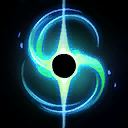
|
Zeratul’s very interesting secondary nuke ability -
 Singularity Spike. This is a high power single-target (until level 4) damaging ability. Singularity Spike represents a big part of Zeratul’s burst damage, so try to learn the skill shot timing and range very well. Zeratul’s highest burst potential comes when you can land a Singularity spike on the target, or two if you’re above level 16, then land a weapon attack and cleave at the exact same time as the bomb detonates. This burst damage will surprise foes and give them the least amount of time to react to the incoming damage. Singularity Spike’s slow can also be very important while chasing or kiting enemies, but mind the delayed effect if you’re trying to consider how it will affect your aim. Singularity Spike. This is a high power single-target (until level 4) damaging ability. Singularity Spike represents a big part of Zeratul’s burst damage, so try to learn the skill shot timing and range very well. Zeratul’s highest burst potential comes when you can land a Singularity spike on the target, or two if you’re above level 16, then land a weapon attack and cleave at the exact same time as the bomb detonates. This burst damage will surprise foes and give them the least amount of time to react to the incoming damage. Singularity Spike’s slow can also be very important while chasing or kiting enemies, but mind the delayed effect if you’re trying to consider how it will affect your aim. |
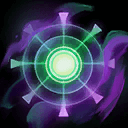
|
 Blink is the most powerful mobility skill in the game on a basic ability. Blink has a very short cast time, traverses the distance instantly, and disjoints* flying projectiles. Learn to love the Blink. It will save you more times than you can count, and will allow you to make incredible eye-catching plays. It isn’t god mode though, and you have to still be aware that you are a fragile hero who can die if you get silenced, stunned, or rooted, which will all disable Blink. Blink is the most powerful mobility skill in the game on a basic ability. Blink has a very short cast time, traverses the distance instantly, and disjoints* flying projectiles. Learn to love the Blink. It will save you more times than you can count, and will allow you to make incredible eye-catching plays. It isn’t god mode though, and you have to still be aware that you are a fragile hero who can die if you get silenced, stunned, or rooted, which will all disable Blink.
*Disjoint: A projectile becomes "disjointed" when the target activates an ability like blink, or when cloak triggers while the projectile is mid-flight. In this instance the projectile will be nullified and not impact the target. Note that this only applies to targeted projectiles, ranged heroes' weapon attacks for example. |
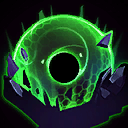
|
 Void Prison is arguably the best heroic ability in the game. Void Prison has a mind-boggling number of potential uses. The best case scenario, and most familiar to people, is to hit as many enemies as possible to give your team time to set up for their big AOE ultimates.If that situation doesn’t present itself then Void Prison still overperforms, because you can use it to incapacitate healers (to give your team time to focus down the others on their team), split people from their team, escape from enemies, block off passageways, save an ally from an incoming aoe ultimate, or just buy time for your cooldowns. Get very comfortable with Void Prison’s cast range and radius, because you want to be able to snap it out whenever an opportunity arises. Void Prison is arguably the best heroic ability in the game. Void Prison has a mind-boggling number of potential uses. The best case scenario, and most familiar to people, is to hit as many enemies as possible to give your team time to set up for their big AOE ultimates.If that situation doesn’t present itself then Void Prison still overperforms, because you can use it to incapacitate healers (to give your team time to focus down the others on their team), split people from their team, escape from enemies, block off passageways, save an ally from an incoming aoe ultimate, or just buy time for your cooldowns. Get very comfortable with Void Prison’s cast range and radius, because you want to be able to snap it out whenever an opportunity arises. |
Early Game
Zeratul can be very powerful during the laning phase, but in order to do so he needs the freedom to roam between lanes and harass or pick off enemies already in combat with his allies. First make sure all of your lanes are covered, meaning that you have an ally in each who intends to stay there and get the experience, then you can begin planning your roaming strategy. First priority are lanes where your allies have hard crowd control (stuns, roots) that give you time to kill your enemies. These lanes are even better to gank if the enemies in question don’t have particularly good crowd control or escape mechanisms of their own. After identifying the likelihood of a gank being successful in each lane based on the matchup ( examples below ) you can spend your early time on the map trying to pick off targets in those lanes.
After the initial stability of the laning phase things can start to break down a bit, and you’ll find yourself dealing with repeated skirmishes and small objectives being taken. Zeratul has good mobility, and combined with cloak it allows him to scout out opponents who might be taking mercenary camps or pushing their limits and either call in reinforcements or cut them down on his own. Remember, during this phase of the game it is very important to maintain experience flow in every lane so that you don’t fall behind. If you have to go hold a lane because an ally died that is okay, and you shouldn’t keep roaming around behind enemy lines or between lanes at the cost of giving up a bunch of creeps worth of experience.
*Lane Prioritization Examples:*
A+++: One of the lanes is your Uther and Tychus against an enemy Witch Doctor and Sgt. Hammer. Dance a jig! This lane is exceptionally easy to gank with the help of Uther’s crowd control, Tychus’s high damage, and neither Witch Doctor nor Sgt. Hammer have good hard CC or escape mechanisms.
B: One of the lanes is your Valla against an enemy Malfurion. While Valla contributes good damage in a gank she doesn’t have the hard crowd control you would really like to see. Malfurion has alright defensive crowd control, but it can usually be circumvented with good postioning and his heal takes a while to really kick in, so you have an opportunity to burst him down if he makes a mistake. Keep an eye on the situation here so you can show up at opportune moments and kill malfurion.
F-: This lane has your Raynor and Zagara playing against an enemy Tassadar and Brightwing. Might as well cry yourself to sleep before trying to get a kill in this lane. Your team packs alright damage, but both Brightwing and Tassadar have powerful escape mechanisms, healing or shielding, and can dish out their own brand of hurt if you overstep your situation. Never bother to come here unless the enemy is WAY out of position, like maybe having a nice cuddle with your fort, or you just have to hold the lane for experience so your allies can go back to base to fill up their health and mana.
*Side Note:* Your roaming during the lane phase can be even more effective if you move around the map in a pair with someone who has hard CC or good damage output. Bonus points if you have a Nova to be cloak buddies with! Nova and Zeratul together can be a devastating roaming pair in the early game with tons of burst damage!
Skirmishing
Skirmishing effectively as Zeratul is a matter of being patient and understanding your limits. Try to conserve your blink by approaching enemies using cloak, brush, and mounts to get in range for your cleave and weapon attacks. Remember that Singularity Spike has a delay before the damage and slow, and if you use it too late the enemy might get to the safety of their turrets and gate before you can make use of the slow effect. It should be obvious, but a dead Zeratul does no damage, so try to use Blink to keep yourself safe as a first priority rather than always chasing low enemies into dangerous territory ( especially prior to wormhole ).
*At this point
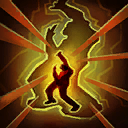 Shrink Ray
Shrink Ray has started to come into play if you have been doing your job and the enemy supports are on the ball. Fortunately, you get access to
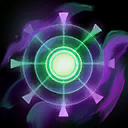 Wormhole
Wormhole at the same time, and any time you get hit by the ray you should be able to either Blink or Wormhole out and wait for a new opportunity to fight. Don’t get baited into thinking you can win a fight even while shrunken, because you will get kited or tanked out and wrecked. It’s better to eat the shrink ray, get out of the fight, then return once you’re full size and full damage rather than trying to fight while crippled and an easy target.
Late Game Team Fighting
At this point in the game you have all of Zeratul’s tools at your disposal, making you a highly mobile burst damage assassin with a game changing ultimate ability. During this phase of the game it becomes very important to stick with your team so that you can team fight at maximum effectiveness. Try to coordinate with teammates when deciding which targets should go down first, prioritizing characters with lower health pools or those that step out of position, and try not to ruin any of your teammates’ set ups with mistimed void prisons. You can scout ahead of your team, relying on Blink, Bolt, and cloak to keep you relatively safe. Depending on your team composition you can try to initiate fights with big ( 3-5 target void prisons ) or you can save it to split the enemy team up during the middle of the fight. Catching one or two enemies in void prison during the fight can render the enemy team very vulnerable, because they either have to keep fighting outnumbered for the duration or leave their teammates behind to escape. Once you have that all figured out it is simply a matter of picking the right target at the right moment to assassinate them. Good targets are usually at least a bit isolated from their team, have already used their hard CC or escape mechanism, and are distracted by a threat or pursuing a target that is other than you.
Happy Hunting!
Throughout the guide I have referenced a "No Peel" build and repeatedly stated that it is not for general use, but can be extremely effective in the right circumstances. The reason I call it the "No Peel" Zeratul build is that the build is based around capitalizing on a 5 second window after coming out of stealth where Zeratul's weapon attack damage is off the charts. We utilize
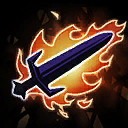 Searing Attacks
Searing Attacks,
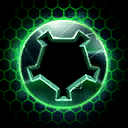 Assassin's Blade
Assassin's Blade,
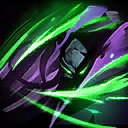 Shadow Assault
Shadow Assault, and
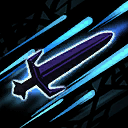 Berserk
Berserk to turn into a veritable killing machine. The only downside of this build is that you NEED to be able to attack consistently for the 5 seconds in order to be effective. This means that if the enemy team has more than one hero with a very reliable stun, root, knock back, or
 Shrink Ray
Shrink Ray then you will be prioritized and shut down any time you team fight. Fighting with this build is very similar to playing normal Zeratul, but instead of darting in and out you will need to find an opportunity to strike and commit
HARD to killing your target. Here is the recommended "No Peel" build again:
Here is a rough breakdown of how the "No Peel" build matches up with various heroes.
Green means the "No Peel" build has a good match up and can be used,
Red means that hero will be a serious hindrance to the functioning of the build.
![]()
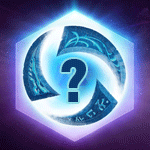


Quick Comment (8) View Comments
You need to log in before commenting.